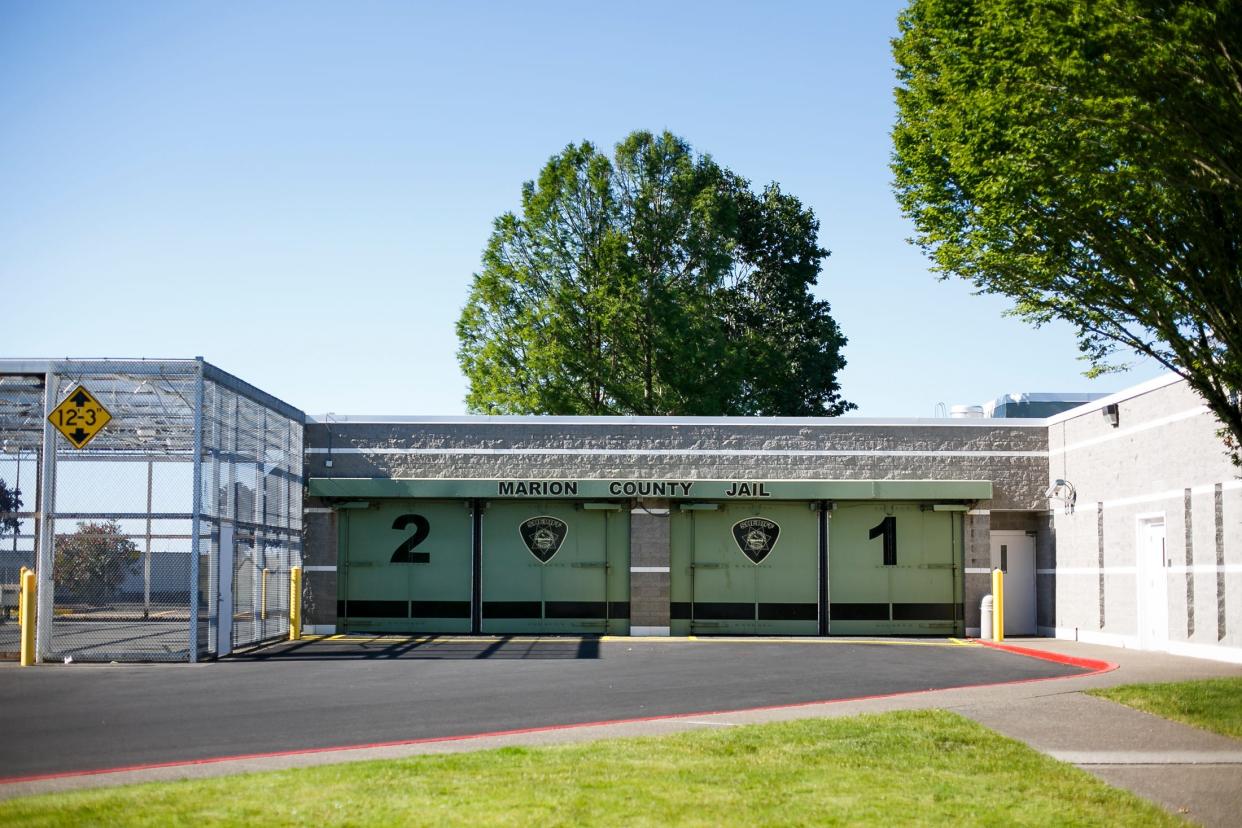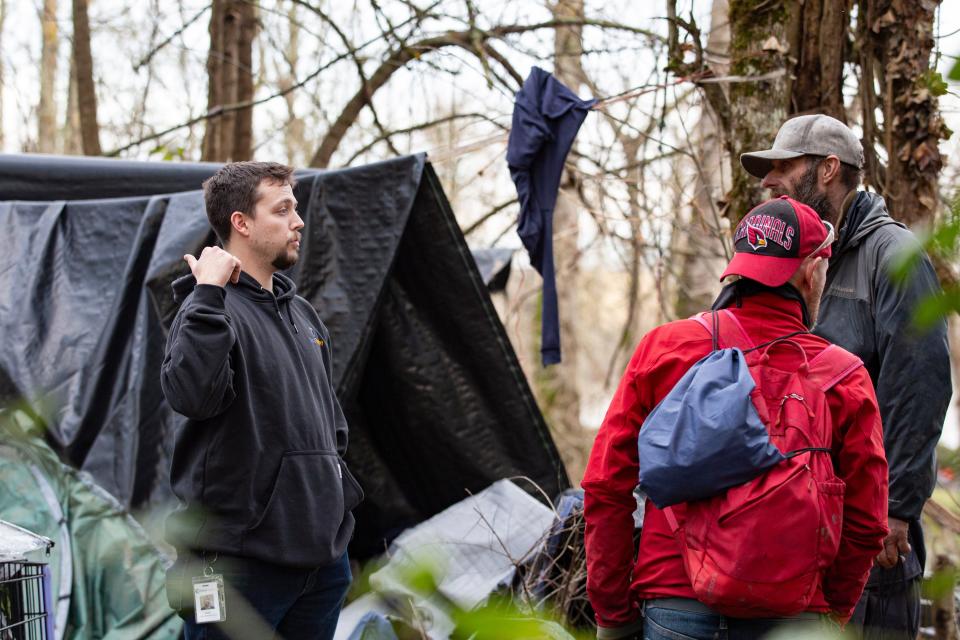Marion County eliminating barriers for addiction treatment in jails

There were 459 Marion County Jail inmates who started opioid use disorder treatment while in custody this year under a program administered by an outpatient clinic provider.
Employees of the clinic provider, Ideal Option, help inmates get medication-assisted treatment through funding from Ballot Measure 110, Oregon’s Drug Addiction Treatment and Recovery Act.
Medication-assisted treatment is available to anyone who is opioid dependent and tests positive after a drug test. Potential new patients are seen on Mondays and Wednesdays to determine whether the program would be a good fit.
Last month, 59 inmates started treatment for opioid use disorder. In total, jail officials said there were 87 adults in custody going through treatment as of late December.
"This program started in the jail roughly one year ago and we have seen a steady increase in participation," a jail spokesperson said.
At a time when many individuals in custody cannot access addiction treatment, these statistics are promising, said Josh Lair, Ideal Option's community and law enforcement outreach manager in Salem.
“77% of individuals that are engaged in treatment in the jail are actively engaged with us upon release,” Lair said. “So we have a really good success rate.”
Peer outreach specialist Aidan Sorrells also visits the jail twice a week to meet with patients, help them get started with treatment and connect them with any other resources they might need upon release.
Sorrells' job also involves outreach to the homeless community, helping those who are interested get started with treatment.
The Salem Police Department homelessness services team estimates 80-90% of unhoused individuals are under the influence of fentanyl, Det. Scotty Nowning said in a November legislative committee meeting.
What recovery from opioid addiction can look like
Sorrells knows what it's like to be in a situation where it feels as if there is no hope and nowhere to turn for help. He said he was homeless most of the time from age 11 to 23 and is a recovering addict.
Patients at the jail get three visits per week and Sorrells visits twice each week to ask them how they are doing with treatment. Many inmates have started asking to talk with him week to week, which allows him to help even more people, he said.
“I’ve spent many nights in that jail, and I never had a visitor,” Sorrells said. “So having somebody that’s not my attorney come and visit me would’ve been cool.”

Ideal Option uses a variety of medications for opioid use disorder patients, like Suboxone and Naltrexone, to help people detox from substances such as opiates and then begin their journey toward a sober lifestyle.
Suboxone and Naltrexone are opioid antagonists, meaning they attach to the same brain receptors as opiates and reduce the impacts of dependency. Brian Dawson, Ideal Option chief medical officer, told Oregon lawmakers earlier this month that 96% of Ideal Option patients report no drug-related arrests or charges since starting treatment.
Suboxone contains naloxone, commonly known as Narcan, which helps counteract the effects of opioids. Ideal Option prescribes Suboxone to patients in jail who are ready to begin medication-assisted treatment.
Naltrexone can cause the symptoms of withdrawal to worsen, so it is typically only prescribed in cases when a patient has not taken opioids for at least a week.
Sorrells said he gets to know patients on a personal level and tries to understand their individual needs so he can coordinate services to best support them. Recovery takes a lot more than just taking medication, he said.
Patients may need housing, a place to get food, transportation, a bed to detox in, to sign up for health insurance, access to a phone, behavioral health care or just someone to talk to about how they're doing.
“We’re here, whatever that looks like,” Sorrells said.
Once patients start treatment in the jail, Sorrells hands out pamphlets with his contact information and directions for how to get to Ideal Option. He said he tries to make sure people are connected with other community resources as soon as they get out of jail to continue treatment.
Breaking down barriers for unhoused addiction recovery
Sorrells also does outreach to help those experiencing homelessness get started with treatment.
He often goes to Wallace Marine Park along the Willamette River in West Salem, where he lived when he was unhoused.
“Just seeing a familiar face constantly and consistently, I know the impact it had in my life,” said Sorrells. “And so now I get to do that for other people.”
The homeless encampments at Wallace Marine Park are one of the worst areas for substance use in the county, according to Nowning, the detective with the Salem Police Department.

Sorrells treks through the park several days a week — no matter the weather — handing out bags with water, Narcan, food and brochures detailing Ideal Option resources.
As he moves from one tent to the next, calling many people out by name, he offers services people might need.
“People not giving up and people just being there, just showing up when it's pouring down rain with a bottle of water saying, 'Hey man, come on down if you want some help,'" Sorrells said.
Sorrells said he also works to eliminate barriers so campers faced with decisions such as finding food and having to move their tents due to inclement weather can get to a place where addiction treatment is accessible.
“So if somebody calls me and says, 'I couldn't make my appointment because I haven't been able to eat and I had to go find food,' well then I'll put together a list of where to get food boxes for them,” Sorrells said.
Sometimes there are systemic barriers, like not having enough inpatient treatment beds, that Sorrells isn't able to help individuals overcome.
“I tell people we don't have a magic wand, but we can at least exhaust all options,” he said.

Sydney Wyatt covers healthcare inequities in the Mid-Willamette Valley for the Statesman Journal. Send comments, questions, and tips to her at SWyatt@gannett.com, (503) 399-6613, or on Twitter @sydney_elise44
The Statesman Journal’s coverage of healthcare inequities is funded in part by the M.J. Murdock Charitable Trust, which seeks to strengthen the cultural, social, educational, and spiritual base of the Pacific Northwest through capacity-building investments in the nonprofit sector.
This article originally appeared on Salem Statesman Journal: Marion County Jail uses Measure 110 funds for addiction treatment

